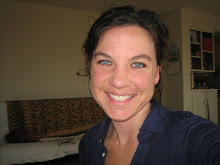The Controversial Sweetener
Aspartame is an artificial sweetener used in many processed foods, particularly low calorie foods, such as diet sodas, gum, candies, cereals, baked goods etc. Since aspartame is 200 times sweeter than sugar (Murray 2005, 45) it is billed as a no calorie sweetener that is a perfect sugar substitute!
Let’s look at some reasons why this so called “perfect” sugar substitute may not be so perfect.
Although aspartame is currently the most used artificial sweetener in the US, it also receives the most complaints at the FDA than any other food substance (75% of all non-drug complaints to the FDA). (Murray 2005, 45) (Ross 1999, 268). Aspartame is made by chemically combining two naturally occurring amino acids (phenylalanine and aspartic acid) and methanol. Methanol, also known as wood alcohol, is a known poison. (Fallon 2001, 51) Our body breaks down methanol into formaldehyde, a deadly toxin. (Mercola, 2010)
Aspartame has been shown to actually increase appetite and the desire for sweets in particular. Take a look at some symptoms that have been reported to the FDA from people who have ingested aspartame in food and beverage products: (Ross 1999, 36)
seizures
migraine headaches
hives
menstrual changes
weight gain
headaches
severed depression
insomnia
anxiety attacks
Another thing to consider: no chemicals in our bodies are isolated. Compounds such as aspartame will interact with other ingredients in the foods, medicines and other toxins we ingest and these interactions have not yet been studied. (Freidlander in Bauman 2010, 127) There is still some controversy as to whether or not aspartame is actually absorbed by the body. Whether or not it has been proven that the body absorbs aspartame, the list of symptoms above should be enough to make us question the safety of this artificial ingredient
References:
http://www.mercola.com/article/aspartame/dangers.htm “Aspartame: What You Don’t Know Can Hurt You” (Mercola)
Bauman, Edward;Freidlander, Jodi. (2010). “Aspartame Research: Questions Remain”. Bauman College NE Handbook, 127.
Fallon, Sally. Nourishing Traditions. Washington, DC.: New Trends Publishing Inc., 2001.
Murray, Michael. The Encyclopedia of Healing Foods. New York: Atria, 2005.
Ross, Julia. The Diet Cure. New York: Penguin, 1999.
Monday, June 14, 2010
Subscribe to:
Post Comments (Atom)



No comments:
Post a Comment